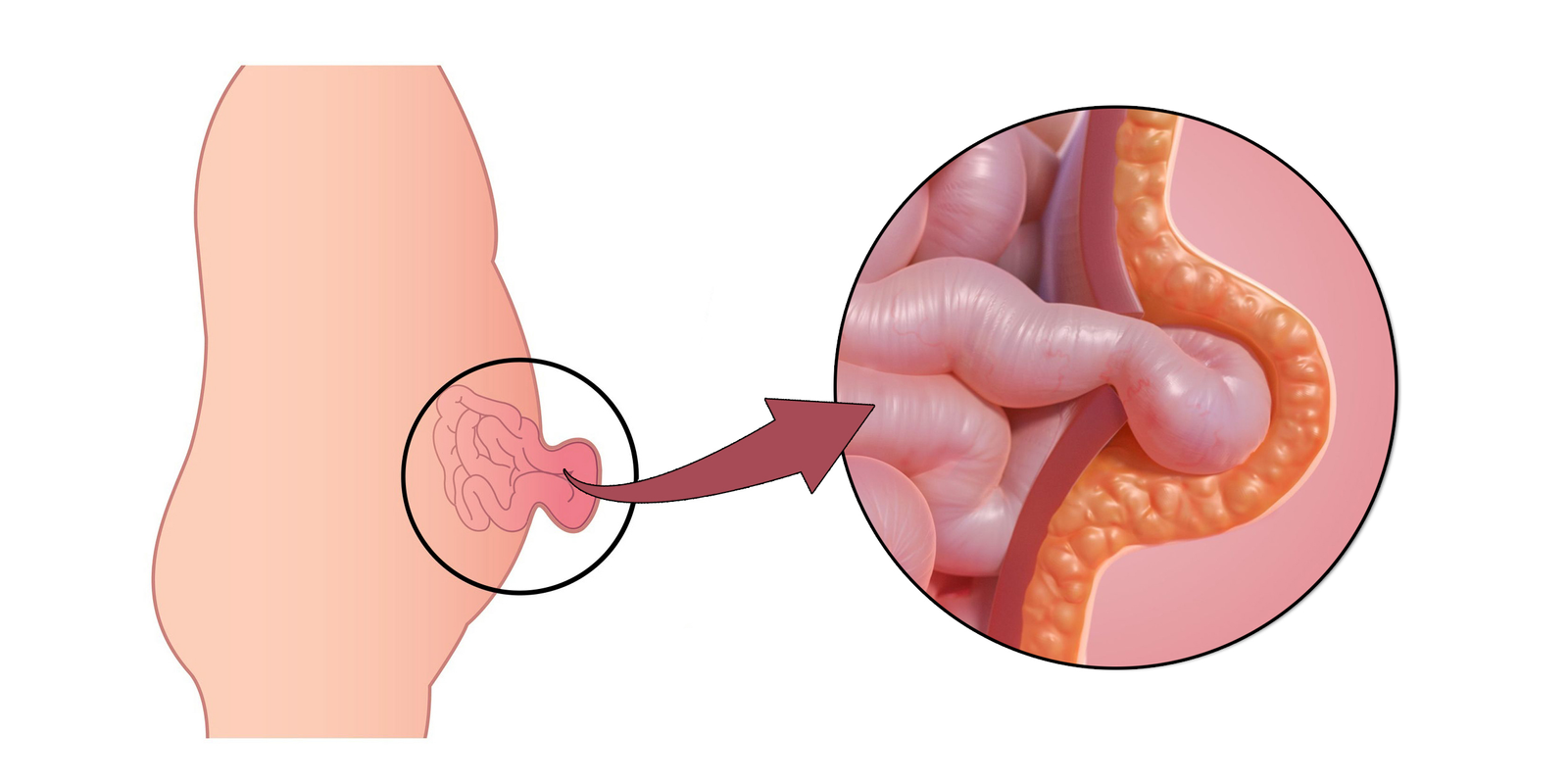𝗨𝗺𝗯𝗶𝗹𝗶𝗰𝗮𝗹 𝗛𝗲𝗿𝗻𝗶𝗮
The small opening that remains in the baby's abdominal wall under the belly button and umbilical hernias are swollen bumps that appear when part of your intestines stick out through your abdominal muscles near your navel.

𝗦𝘆𝗺𝗽𝘁𝗼𝗺𝘀 𝗼𝗳 𝘂𝗺𝗯𝗶𝗹𝗶𝗰𝗮𝗹 𝗵𝗲𝗿𝗻𝗶𝗮
- A slight swelling or even a bulge near the belly button.
- Severe abdominal pain and tenderness.
- Redness or other discoloration.
- Gastrointestinal discomfort.
- Nausea and vomiting.
- Constipation.
- Fever.
- Bloated, round abdomen.
𝗖𝗮𝘂𝘀𝗲𝘀 𝗼𝗳 𝗨𝗺𝗯𝗶𝗹𝗶𝗰𝗮𝗹 𝗵𝗲𝗿𝗻𝗶𝗮
- Overweight.
- Straining on lifting or pushing heavy objects.
- Frequent Pregnancies.
- Abdominal Surgery.
- Having a persistent heavy cough.
- Obesity.
- Long-term dialysis to treat kidney failure.
𝗥𝗶𝘀𝗸 𝗙𝗮𝗰𝘁𝗼𝗿𝘀 𝗼𝗳 𝘂𝗺𝗯𝗶𝗹𝗶𝗰𝗮𝗹 𝗵𝗲𝗿𝗻𝗶𝗮
Adults being overweight or having multiple pregnancies may increase risk.
Chronic health conditions cough, constipation, vomiting and benign prostatic hyperplasia)
Infants, especially premature babies and those with low birth weight.
𝗣𝗿𝗲𝘃𝗲𝗻𝘁𝗶𝗼𝗻 𝗼𝗳 𝘂𝗺𝗯𝗶𝗹𝗶𝗰𝗮𝗹 𝗵𝗲𝗿𝗻𝗶𝗮
- Avoiding obesity.
- Maintaining a healthy weight.
- Exercise regularly, it will strengthen the abdominal wall.
- Treat a chronic cough or bronchitis.
- Getting treatment for Chronic Constipation.
𝗪𝗵𝗲𝗻 𝘁𝗼 𝘀𝗲𝗲 𝗮 𝗱𝗼𝗰𝘁𝗼𝗿
- If you have a bulge near your navel or if you are having severe pain in your belly button.
- The pain doesn't go away or gets worse.
- Has stomach cramps.
- Have an increased temperature or chills.
- Your wound smells bad, or it looks red and swollen.
𝗪𝗵𝗮𝘁 𝘄𝗲 𝗱𝗼?
𝗢𝗽𝗲𝗻 𝗵𝗲𝗿𝗻𝗶𝗮 𝗿𝗲𝗽𝗮𝗶𝗿:- Open hernia repair is often performed under local anesthesia or regional anesthesia injected into the spine.
𝗟𝗮𝗽𝗮𝗿𝗼𝘀𝗰𝗼𝗽𝘆 𝗦𝘂𝗿𝗴𝗲𝗿𝘆:- A laparoscopy is a keyhole surgery performed on the abdomen. A small incision is made in the abdomen. A thin tube is inserted to look inside the abdomen and pelvis. This thin tube contains a light and a camera called a laparoscope.
